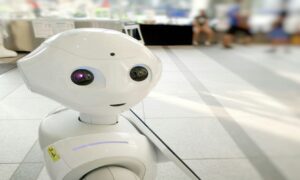Our world is getting smarter by the day. Technological innovations such as AI and robotics are disrupting almost every industry, forcing most companies to embrace them before they are rendered irrelevant. Recent studies have shown that the AI market alone is set to surpass $100 billion over the next five years (by 2025).
Even with the huge promises of AI and robotics, one sector that remains behind when it comes to adopting these technologies is the higher education sector! Most universities and higher education institutions are still operating the old-fashioned way. The truth is that the technological revolution will determine if the educational system will change for the better or not.
Let’s go into details and see what AI and robotics mean for higher education.
Combine ideas across various scientific boundaries
When Applied in sciences, artificial intelligence can combine different ideas across various scientific boundaries, reducing the overall cost involved in gaining insights. As the technology gets powerful, it will combine knowledge as instructed and autonomously search for combination, allowing students to deepen their intelligence. Better yet, AI and robotics can also help universities collaborate better with external parties, including clinical practice and medical research sectors.
Easy and quick analysis of student’s progress
Let’s face it; the education system isn’t that flexible as it should be. When you look at the standards set, you will realize that they are almost the same for everyone. With AI and robotics, all this could change. Analyzing the progress of students will be done effectively and quickly. Employing the technology will mean teachers can be able to easily identify the weaknesses and strengths of students and therefore tailor their program to address specific needs.
Automation of routine academic tasks
When it comes to learning and teaching, the value of AI and robotics cannot be overlooked. The technologies can be used to automate routine academic tasks such as grading assignments and documentation. By helping in these areas, teachers won’t have to spend so much time and instead focus on other sectors.
Identify flaws and gaps of courses
Let’s look at an example here. See, if a student struggles with assignments or handling a particular course in school, AI could easily sport this and recommend something to change it, say for instance suggest having some more guidance or tuition. Analyzing student’s overall data to identify flaws and gaps is a sure way to address common issues that students face.
AI and robotics can effectively improve the quality of higher education. Besides cutting down the overall cost in gaining insight in different scientific sectors, the technologies can help teachers tailor the education system to suit different students. Better yet, higher education institutions can easily identify course flaws and gaps and address them effectively.



















































